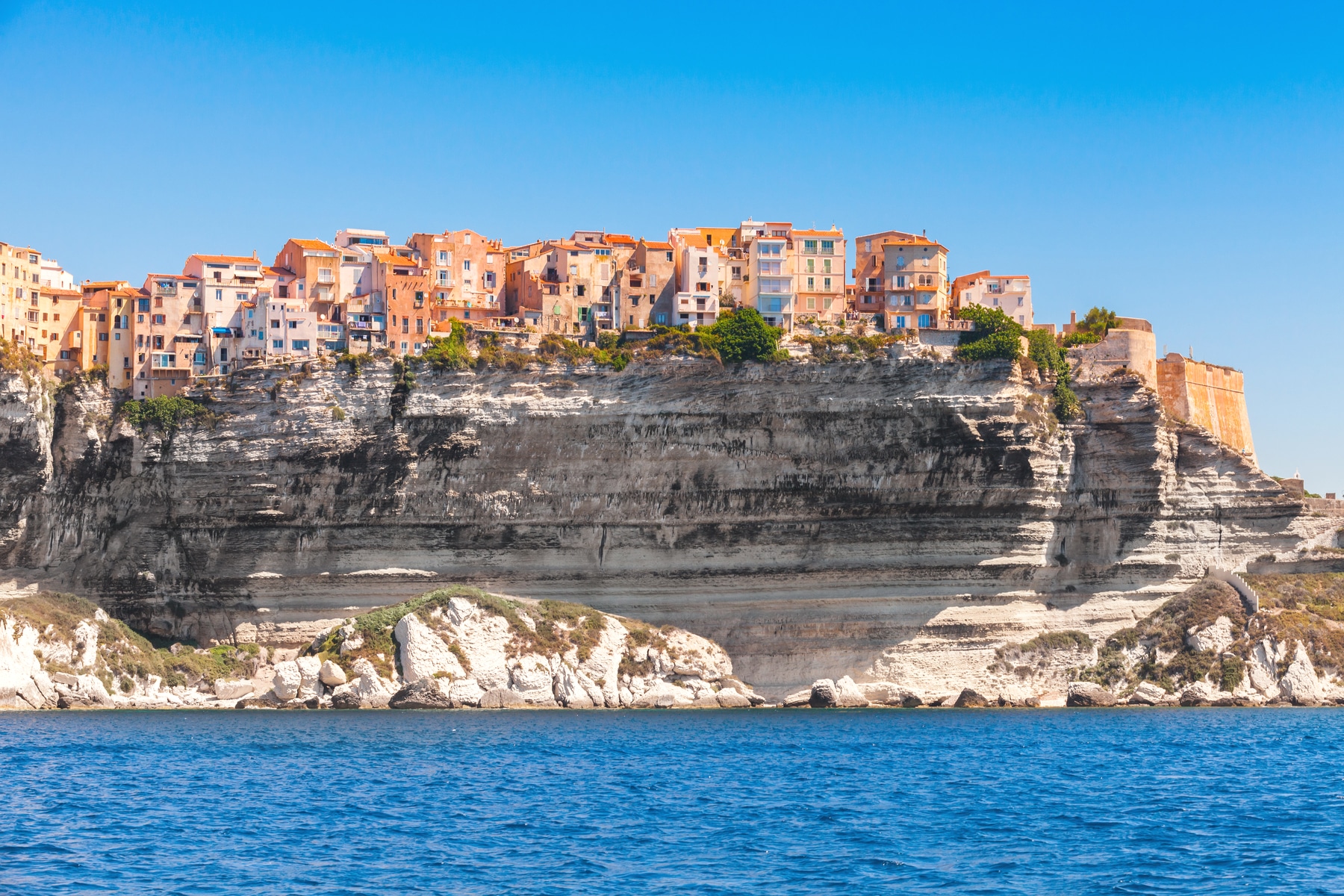Bonifacio

The Upper Town - narrow alleys and breathtaking views
Up to 80 meters above the sea, Bonifacio towers over the strait "Bouches de Bonifacio", which separates Corsica from Sardinia. This is where Homer claims to have seen man-eating giants on his Odyssey. The houses of the town are built so close to the cliffs that it seems as if they could fall into the sea at any moment. Because there was not much space on the headland. So the alleys are not only steep, but also narrow and cramped. Especially in summer, it can get very crowded in the city. Because almost all visitors do not want to miss the numerous viewpoints and the great panorama of Bonifacio: From the Chapelle Saint-Roch, located just before the entrance to the upper town, the Port de Gênes, you look down on the steep chalk coast and a rock jutting out of the sea, the Grain de Sable. A great view of the harbor can be seen from the Bastion de l'Etendard. Here are also remains of a fortification from the 13th century. A view from the city wall promises a great panorama all the way over to Sardinia. On the mainland side, the view is of the white cliffs and the green maquis, the carpet of green plants so typical of Corsica.
Genoese drainage system and baroque church
Typical of Bonifacio's upper town are stone arches that connect opposite house facades. They once served to channel rainwater into a central cistern. They were built by the Genoese in the 14th century. Above the former cistern is a covered porch, which served as a meeting place in the Middle Ages. It belongs to the church of Sainte-Marie-Majeure, built in the 13th century, but repeatedly rebuilt under the Genoese. The three-nave church offers a Baroque interior and especially the high altar, a holy water font and a sarcophagus from the 3rd century count as the main sights of the church.
[caption id="attachment_26595" align="aligncenter" width="800"] The Church of Sainte-Marie-Majeure[/caption]
The Church of Sainte-Marie-Majeure[/caption]
Down to the sea
Bonifacio's harbor is located on the north side of the headland on a fjord-like bay that pushes a kilometer and a half inland. The port is the starting point of numerous boat tours that allow a look into the caves that are located at the foot of the cliffs. In addition, a boat trip offers a unique view of the seemingly impregnable city.
On the south side of the headland is the Escalier du Roi d'Aragon. The staircase with 187 steps leads down to the sea. If you make your way down, you have to plan for the way back: there is no other way than to go up the 187 steps again. Less clear, however, is the origin of the staircase: one version reports that it was built in 1420 by soldiers of King Alfonso V so that they could surprise besiegers of the city. According to another version, the townspeople carved the staircase into the rock when the entrance to the port was blocked by King Alfonso. Other sources attribute the creation of the staircase to the fact that it was intended to reach a freshwater well.
Tickets and prices
entrance fee 3,50€
Children from 6-11 years 1€
Children up to 5 years free
With the Pass Monument (4,50€ or 1,50€ for children from 6-11 years) you can visit the stairs and other sights in Bonifacio.
https://www.shutterstock.com/image-photo/king-aragon-stairs-bonifacio-corsica-france-225823081
Directions
Bonifacio is located in the south of the island and can be reached via the T40 (coming from the southwest) and the T10 (coming from the north, the center of the country and the east).
Ferries to Bonifacio
Bonifacio has the only major port on the south coast of Corsica. There is a direct ferry service to Santa Teresa di Gallura on the island of Sardinia.